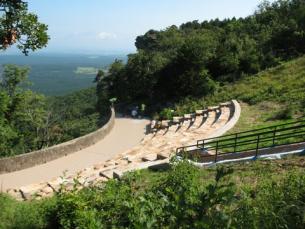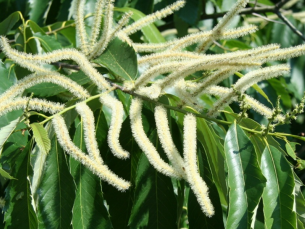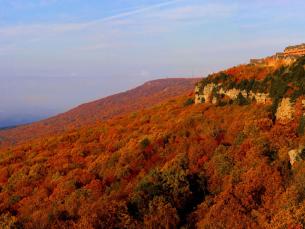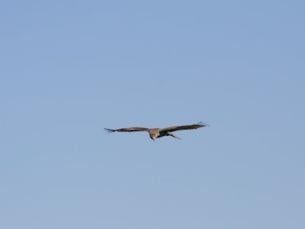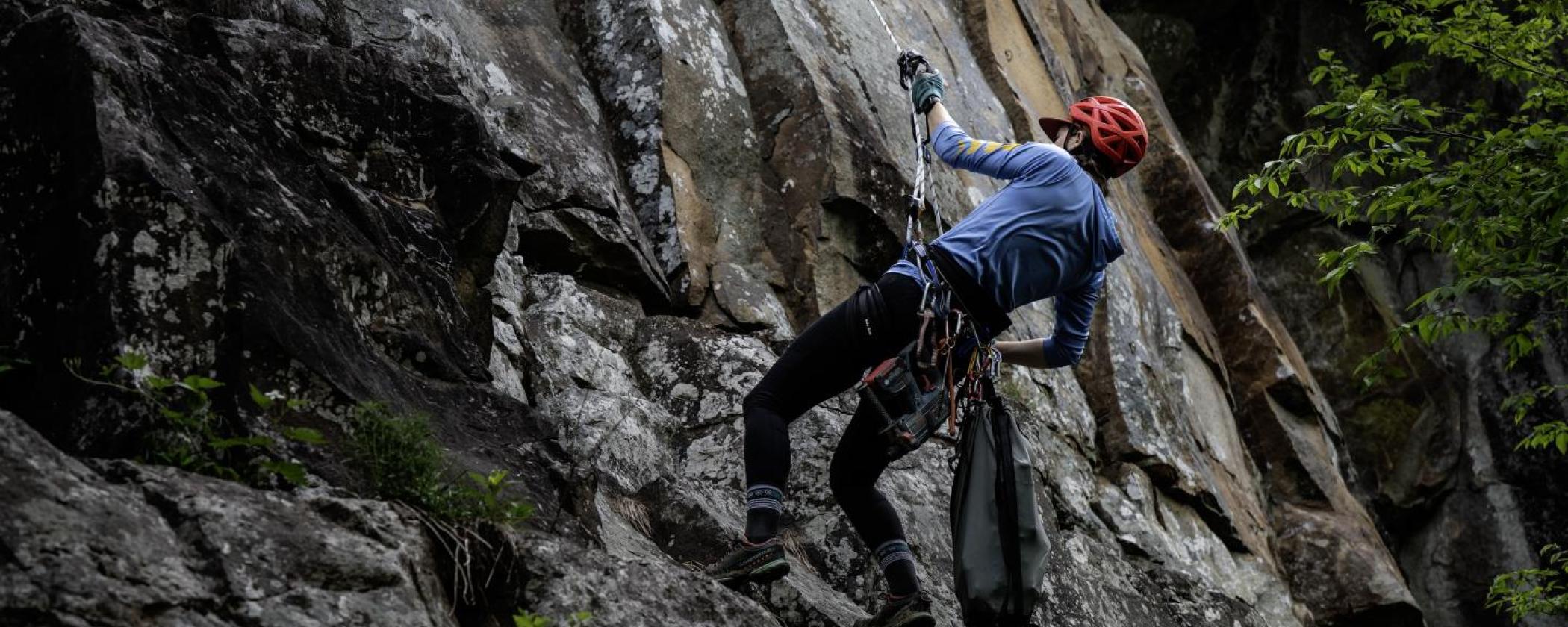
Partnerships Elevate Climbing Experiences at Mount Magazine State Park
By: Zoie CliftMount Magazine State Park—located at the highest point in Arkansas’—has long been a year-round destination for rock climbers. Thanks to a recent collaboration between Arkansas State Parks, the Arkansas Parks and Recreation Foundation (APRF), the Arkansas Climbers Coalition (ARCC), and national partner Access Fund, climbing at the park is now safer and more accessible.
Mount Magazine’s terrain is distinctly different from other Arkansas climbing areas, offering technical, vertical climbs on fine-grained savannah sandstone and expansive views.
“Mount Magazine State Park has a long history of climbing in Arkansas with some of the first ever sport routes bolted there,” said Mitchell Allen, executive director of the Arkansas Parks and Recreation Foundation. “The climbing there feels very different from the rest of the state, with huge exposure looking out over the Petit Jean River valley.”
A recent major rebolting effort improved 32 routes with new anchors, bolts, and lower-offs. The project highlights how strategic public/private partnerships help preserve natural resources and expand recreation opportunities in Arkansas.
“All of these improvements make for safer rock climbing,” said Allen.
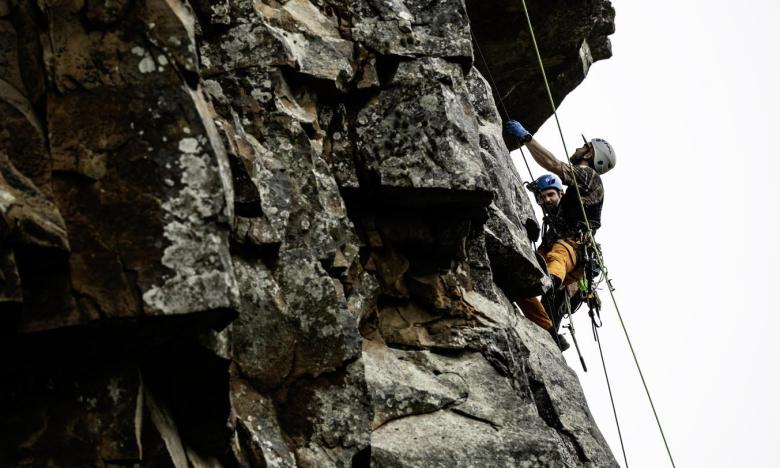
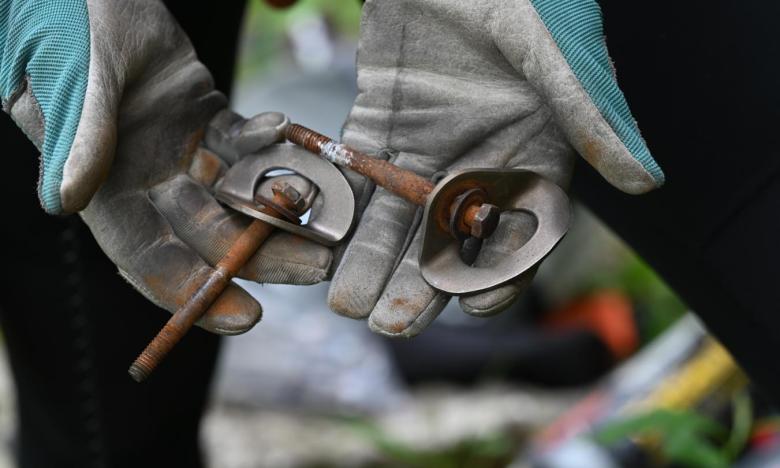
Climber Chase Webb emphasized the value of maintaining hardware and the park’s unique appeal. “There's been a huge push in the last decade to replace all of the old hardware with stainless steel and stuff that's long-lasting, which makes people feel a lot better when they're climbing out here.”
“We moved to Arkansas in 2016 and really fell in love with Mount Magazine because it's one of the most unique climbing areas in Arkansas,” Webb said. “The climbing at Mount Magazine is very similar to a lot of climbing areas in the western United States, so it gives you a really unique experience for Arkansas.”
Beyond technical diversity, Mount Magazine also offers a strong sense of adventure.
“One other thing I want to mention that is unique about Mount Magazine specifically is it's one of the few places in Arkansas that you get a true sense of exposure," said Webb. "So, it makes you feel like you're thousands of feet up in the air."
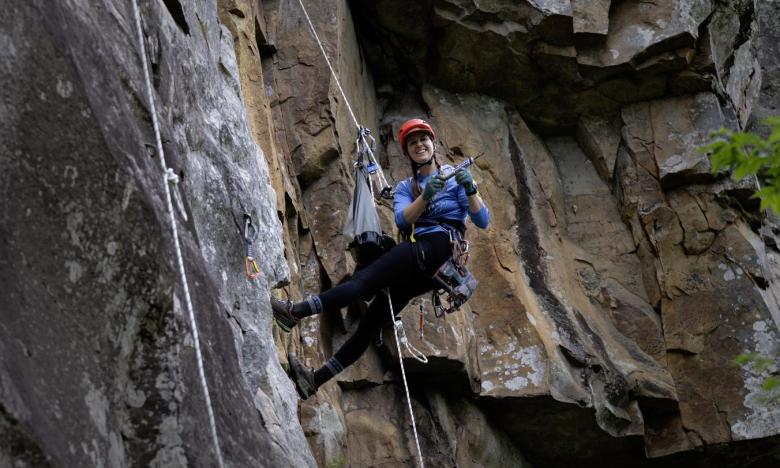
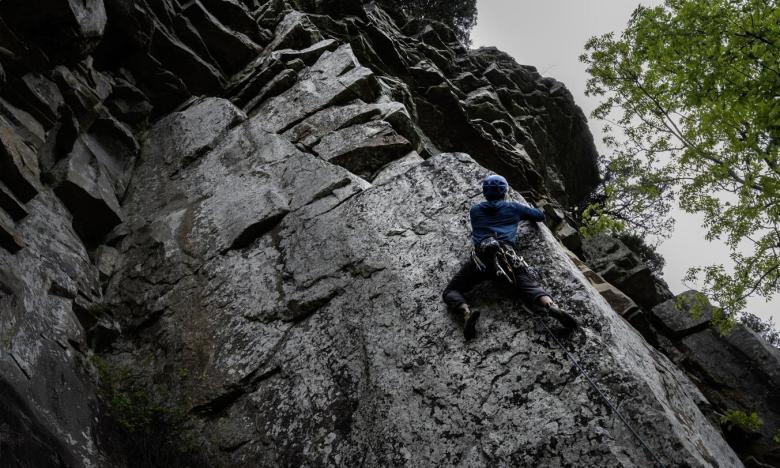
Climbers and volunteers used sustainable rebolting methods like hole-for-hole replacement to minimize impact and align with Leave No Trace ethics. “Essentially, you try and not Swiss cheese the wall,” said climber Judith Brown. “It's worth it to try and reuse that same bolt hole so that you can avoid drilling any new holes that could be avoided.”
“To me, it sounds almost poetic, but climbers have begun to use the term ‘vertical trail’," she added. "Just like our hiking trails, the vertical trails need resource and attention to ensure they last for generations to come."
Mount Magazine continues to evolve with more beginner-friendly routes and opportunities for both sport and traditional climbing. It also holds a special place in Arkansas climbing history.
“As far as climbing history in Arkansas, the very first rock climbing route that was ever bolted with bolts to protect the climb is here,” said Olivia Vitaterna, secretary for the Arkansas Climbers Coalition. “It’s a route called Scarlet Begonias.”
Through collaboration and stewardship, Arkansas State Parks and its partners are ensuring that Mount Magazine remains an iconic, challenging, and accessible climbing destination for future generations.
“Being able to tap into advocacy organizations like the Arkansas Climbers Coalition helps reduce the burden on Arkansas State Parks staff, especially when it comes to really specialized work like replacing rock climbing hardware,” Allen added. “Working together on these projects is necessary to protect both the ecological and recreational resources we love.”

